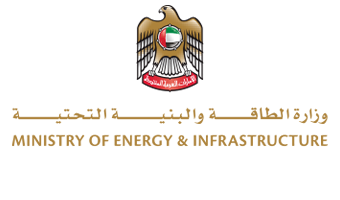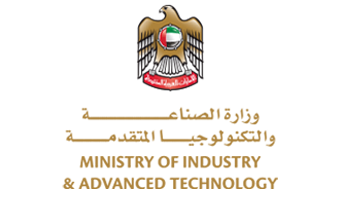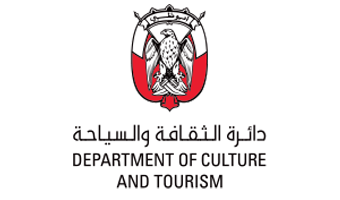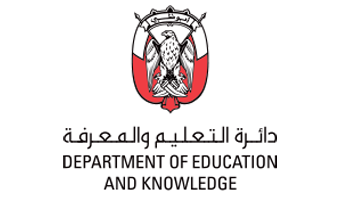Economies today face a twin imperative: Deliver reliable, affordable energy today, while building cleaner, smarter energy systems of tomorrow. The fastest and fairest way of accomplishing both is not to reduce the challenge to a choice between the two, but to integrate them, linking traditional fuels, renewables, and nuclear power through digital intelligence. Diversifying, connecting, and optimising with artificial intelligence (AI) enables energy systems to create resilient growth that reaches every household and business.
 It is precisely this approach that the United Arab Emirates has opted for. Guided by the UAE Energy Strategy 2050, we are pursuing a significantly cleaner energy ecosystem in a bid to reach net zero by 2050. The strategy targets 32 percent clean energy generation by mid-century and aims to triple the share of renewable energy by 2030 supported by an investment of AED 150–200 billion to meet the country’s rising energy demand driven by rapid economic growth.
It is precisely this approach that the United Arab Emirates has opted for. Guided by the UAE Energy Strategy 2050, we are pursuing a significantly cleaner energy ecosystem in a bid to reach net zero by 2050. The strategy targets 32 percent clean energy generation by mid-century and aims to triple the share of renewable energy by 2030 supported by an investment of AED 150–200 billion to meet the country’s rising energy demand driven by rapid economic growth.
At the same time, we are raising ambition on the demand side. The updated strategy sets a goal of improving energy-consumption efficiency by 42–45 percent by 2050, while also committing to doubling energy efficiency by 2030.
In parallel, we are embedding AI across the value chain – from predictive maintenance that helps mitigate supply interruptions to real-time analytics that balance supply and demand. This reflects the UAE National Strategy for Artificial Intelligence 2031, which identifies energy and resources among its priority sectors.
This approach has already delivered results, with our clean-energy share reaching 27.83 percent of the national energy mix in 2023, powered by rapid solar build-out and the contribution of the Barakah Nuclear Energy Plant. In 2024, the plant’s Unit 4 entered commercial operation, bringing it to full-fleet status and the ability percent of the UAE’s electricity generation needs.
The UAE’s energy policy is also closely tied to our industrial ambitions. Our industrial sector’s contribution to the GDP had expanded from a baseline of AED 133 billion to AED 205 billion by the end of 2023 – proof that reliable, affordable, cleaner power attracts long-term capital and enables complex manufacturing.
By powering industry in this way, we are providing our national workforce with secure opportunities and well-paying jobs. Through energy-linked localisation and industry programmes, more than 17,000 private-sector jobs for Emiratis have been enabled since 2018, including 5,500 private-sector roles facilitated in 2024 alone under ADNOC’s In-Country Value program. With this kind of synchronicity between energy and digital policy, infrastructure spending can readily be turned into economic opportunity, rather than being just an abstract line item.
There are a number of significant lessons that other nations can draw from the UAE’s experience. First, design for diversity: A balanced portfolio makes systems robust and prices stable. Natural gas and cleaner liquid fuels remain critical for reliability and industrial heat, while renewables bring low-cost electrons at scale and nuclear energy provides a zero-carbon baseload.
The policy question, therefore, does not revolve around an ‘either/or’ choice but ‘how to coordinate all of the above’, which depends on grids that can absorb variable generation, storage that can time-shift supply, and market signals that reward flexibility. These capabilities are all embedded in the phased additions and efficiency mandates of the UAE Energy Strategy 2050.
Second, make AI a core utility, with machine learning enabling the forecast of demand by neighbourhood and sector. Digital twins can stress-test entire networks before a single cable is installed, and predictive maintenance extends asset life while cutting costs. The UAE’s AI 2031 strategy places energy squarely in scope, accelerating deployment of these tools in generation, transmission, and end-use efficiency.
Third, treat efficiency as a growth engine, not an austerity plan. The most affordable and cleanest kilowatt-hour is one that does not need to be generated. At the national level, demand-side management (DSM) programs translate this principle into measurable targets. For example the National Water and Energy Demand Management Programme aims to achieve a 42-45 per cent efficiency goal by 2050, aligning incentives across buildings, industry, transportation and agriculture. This approach also promotes behavioural change within the UAE community, ensuring that efficiency becomes a driver of sustainable growth rather than a constraint.
Fourth, align energy investment with industrial strategy. The UAE’s manufacturing expansion is anchored to reliable, affordable, cleaner power and a carefully calibrated ‘Make it in the Emirates’ agenda that links long-term offtake with local supply-chain depth and advanced technology adoption. This reduces risk, accelerates deployment, and keeps value in the domestic economy.
Fifth, develop people for the energy-digital frontier. Job creation is the clearest test of inclusive growth, which can only be truly all-encompassing if citizens are able to participate through scholarships, vocational pathways, and lifelong learning that blend electrical engineering with data science, and safety culture with software skills.
Finally, finance at scale and speed. Blended finance, green bonds, and performance-based contracts can gather private capital while protecting public budgets. Stable, long-dated policy signals such as the UAE Energy Strategy 2050 lower the cost of capital for clean generation, efficiency retrofits, and grid modernisation. Regional interconnections and cross-border trade further reduce costs by pooling resources and smoothing variability.
In this context, integrated systems are more affordable to run, more resilient to shocks, and better for public health. They also open doors for innovation: startups flourish as utilities modernise, and as grids digitise, new services appear, from demand response for factories to smart tariffs for households.
Our region is uniquely positioned to lead this model, with abundant solar resources, world-class delivery at scale, and a pragmatic path that cuts the hydrocarbon footprint while accelerating clean power under a diversified 2050 mix and near-term efficiency goals. Fused with AI and advanced engineering, we export not just energy but know-how. And as decision-makers from the UAE and the wider Gulf convene at ADIPEC 2025 – the world’s largest energy event that we proudly host every year – we invite peers to apply a simple blueprint: diversify supply, digitise operations, drive efficiency, align with industry, invest in people, and mobilise finance, so inclusive growth can reach every home and enterprise.
Through this strategic approach, the UAE has been able to turn its ambitions into action, leveraging cleaner energy to strengthen competitiveness today while building the resilient economy of tomorrow. By operationalising the blueprint we have provided, other nations in the region and beyond can translate their own aspirations into opportunity, productivity, and long-term prosperity.
_______
His Excellency Suhail Mohamed Al Mazrouei is the UAE Minister of Energy and Infrastructure
Source: Alarabiya English
















